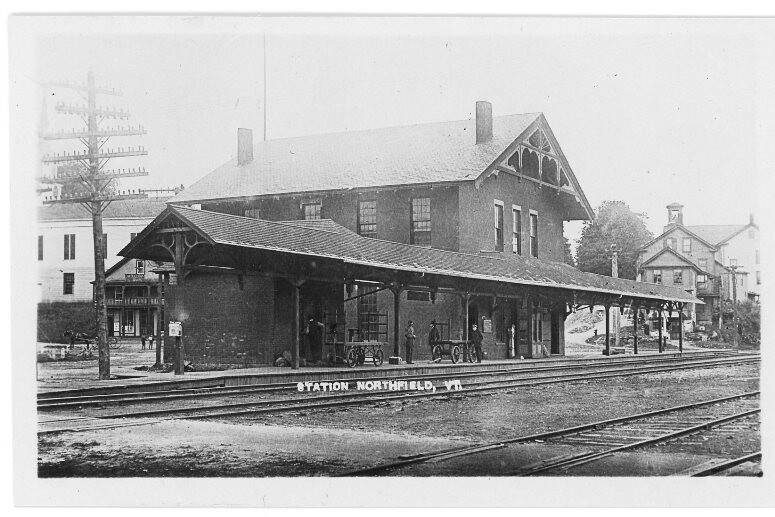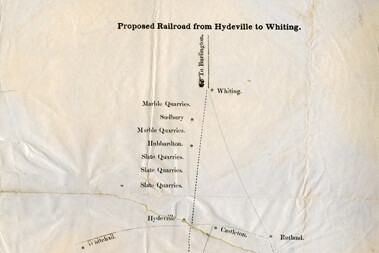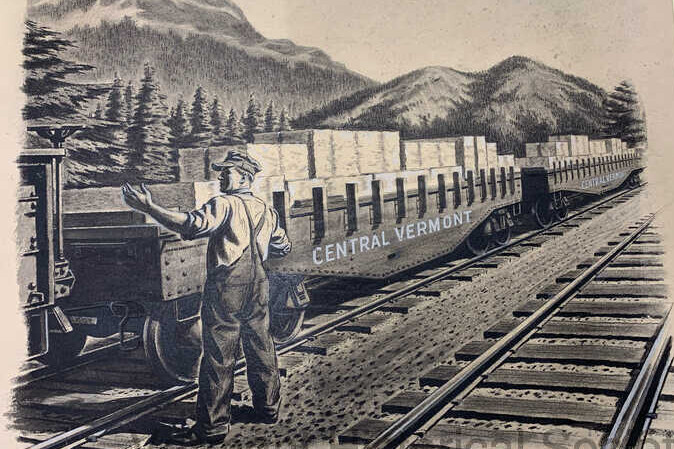Vermont Railroads
Discover how the introduction of railroads impacted Vermont life.
At the time of the American Revolution, Vermont was not easily accessible. Major waterways like the Connecticut River, Winooski River, and Lake Champlain were the easiest routes of travel and trade. In the early 18th century, dirt roadways were traveled by foot or horseback. New England’s first steam powered railroad was only 26 miles long, at first. It was chartered in 1830. Goods were transported from the mills in Lowell to the port of Boston. The company was aptly named the Boston and Lowell Railroad. Vermont also chartered railroad corporations in the early 1830s. But construction did not start until a decade later. The Green Mountains were a physical and psychological barrier. People questioned if building a railroad through the Green Mountains was possible. Railroad construction could be hazardous work. Many Irish immigrants escaping the potato famine laid track in Vermont.
Some saw Vermont as a pass-through route connecting Boston to New York, the Great Lakes region, and beyond. Others believed that the construction of railroads would impact business and industry positively. People hoped that railroads would help Vermont turn from faltering agriculture to industry and commerce. After the Great Crash of 1929, more than 1,500 farms went out of business in Vermont. By 1930, the total number of people working in agriculture fell from 27% to 22% of the total work force. Other industries grew as a result.
There was a railroad race between two major railroad lines – Vermont Central and the Rutland Railroad. Burlington could only support one railroad. Both companies set their sights on the prize. Vermont Central planned to lay rail from White River Junction to Montpelier to Burlington. The Rutland Railroad planned to connect Bellows Falls to Rutland and Burlington. In the end, Vermont Central connected to the Canadian line at Essex Junction instead of Burlington. Laying over 500 miles of track cost the company millions of dollars. May investors went bankrupt. The arrival of the railroad turned small villages along the railway into thriving towns. Industries, trade, and populations expanded.
Learn More
Follow the links below to explore related topics.
Read the Vermont Agency of Transportation’s “Vermont Transportation Theme” to learn more about the history of Vermont’s transportation system over time.
Read "Phineas Gage: How did an accident in Vermont help doctors learn about the human brain?"
Watch “This Place in History: Grand Trunk Railway” to learn about how the introduction of the railroad had a transformative effect on the state of Vermont.
Read “War & Industry: Railroads Come to Vermont” as part of the Vermont Historical Society’s Freedom & Unity exhibit in 2006
Examine a railroad lantern from the Vermont Historical Society’s collection. The glass is engraved with the initials “V C R R” for the Vermont Central Rail Road.


